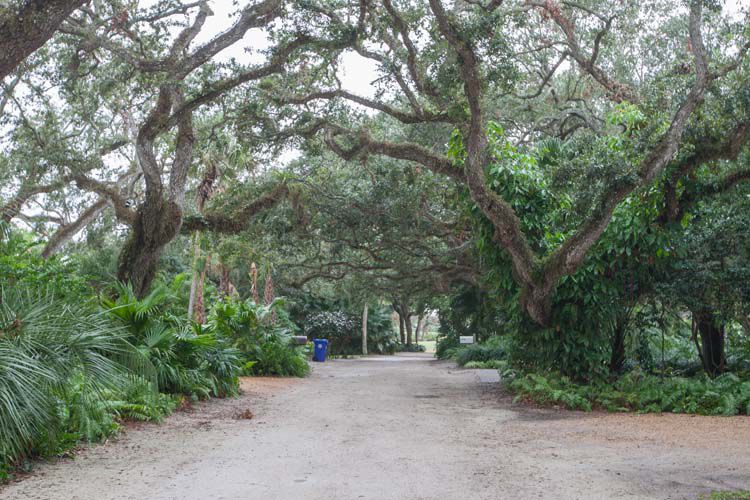
Older homes in Vero’s Central Beach neighborhoods that still utilize septic tanks and might benefit from hooking up to the city’s hybrid septic-sewer system often are on canopied streets, with grand, overarching oaks deeply rooted in the path sewer lines would need to cross to carry away household waste.
The challenge of how to balance two competing ecological interests – preservation of charming old trees and preventing septic runoff into the Indian River Lagoon that poisons marine life – has caused Vero officials to pause before extending the Septic Tank Effluent Pumping (STEP) system to the city’s most established barrier island streets.
City council members were scheduled to vote on an ordinance change last week that would permit the water-sewer utility to run lines down these shell or gravel streets, something currently prohibited due to concern for the historic tree canopy. But in the analysis of the amendment, city staff noted the move might “bring some opposition from property owners and the public concerning protection of the Live Oak tree canopies along these streets.”
That opposition did indeed come – in the form of calls, letters and emails to city hall in the lead-up to last Tuesday’s meeting – resulting in the item being pulled from the agenda.
Christine Osborne, a Painted Bunting Lane resident, wrote to council members opposing the change. “My husband and I purchased our home 10 years ago because of the beautiful canopy of live oaks that create a unique and charming neighborhood. I fear the digging and trenching required to install this system will damage the 100-year-old oaks and destroy one of the gems of Vero Beach,” she wrote.
Mayor Laura Moss said “those trees are an irreplaceable treasure” and suggested that the council hold a workshop on the matter. The rest of the council concurred, adding that multiple workshops in various affected areas would be hosted to make sure everyone is heard.
Councilman Dick Winger penned a memo about the issue, saying the protection of trees deserves “a full hearing.” But he contended the damage would be minimal, based upon his knowledge of the issue.
“My belief is that these streets, especially Sandfly [Lane], contribute through underground flow to surface water pollution due to natural water movement now covered up. The situation is said to be much like that where an underground creek runs from Conn Way under Live Oak to Bethel Creek,” Winger said.
“I have also been assured that a two-inch bore creates no harm. If all this is true, the public needs a forum to understand. If it is not true, then this is not a solution, but a problem.”
The STEP system uses much smaller diameter pipes than standard gravity sewers and does not require the heavy trenching that standard sewer installation entails.
Sandfly Lane resident Mary Sue Brown wrote to the council, “I cannot begin to describe how many people stop to get out of their cars, take pictures, paint or sketch pictures of the live oak canopied streets in this area. I think it is just as important that we do all we can to protect this incredible gift of natural beauty that Vero Beach has. Protecting the Indian River Lagoon is something I voluntarily support financially. But aren’t these precious trees just as important?”
Vero holds the Tree City USA designation and for decades has supported an active Tree and Beautification Committee tasked with enhancing the tree canopy and facilitating the planting of memorial or dedicated trees around the city. The committee has also begun planning what it hopes to be a massive, coordinated tree-planting effort to celebrate the city’s 100th birthday in 2019.
On the flip side of the argument, the city must weigh how much aging septic systems in the affected neighborhood harm the lagoon, the area’s economic and aesthetic centerpiece, which has been seriously degraded in recent years by pollution from worn-out septic systems and other sources.
“Without the Ordinance, the City’s efforts to eliminate existing septic and drainfield systems will be hampered, as well as the City’s efforts to reduce pollutants entering the Indian River Lagoon,” the staff recommendation states.
Vero has invested significant resources in mapping and quantifying its sources of runoff into the lagoon, and it joined the regional Indian River Lagoon Council to coordinate lagoon repair and protection efforts with nearby cities and counties.
City Clerk Tammy Bursick said no date has been set for any workshops or town hall meetings, but that the city is shooting for some time in January or February.



